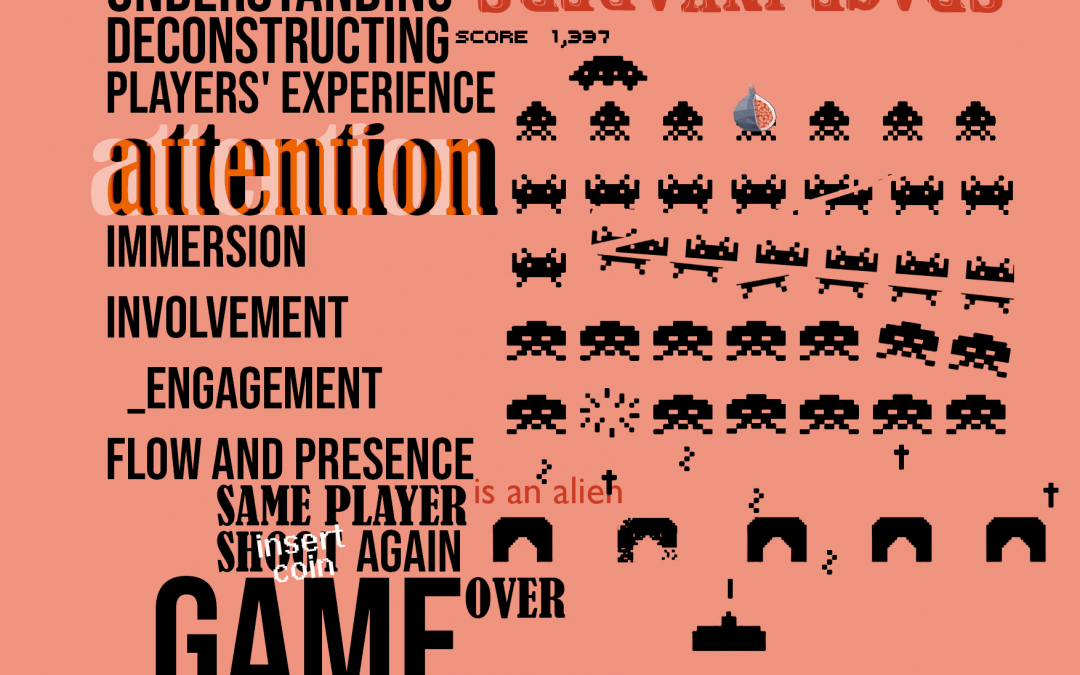1st article in a series intended to define, delineate, and organize the concepts of attention, immersion, involvement, engagement, flow and presence. This first article presents the context of this research work.
Preamble
This 5-part series includes some results of the research article entitled Defining Engagement and Characterizing Engaged-Behaviors in Digital Gaming that I published in the scientific journal Simulation & Gaming (Bouvier et al., 2014). You can find the reference at the bottom of this article.
Note that if these articles have a video game dimension (playful or serious), the proposals apply to other technological and social activities such as virtual reality.
The QuEJAnT project
Context of this research
Prior to joining SYKO studio, I have worked as a post-doc (or post-doctoral fellow) on the QuEJAnT project (Qualification of players’ engagement from the analysis of their traces).
This project brought together Elise Lavoué and Karim Sehaba, two associate professors from the SICAL team (LIRIS laboratory, University of Lyon) and the companies Corexpert, Intellysurf and Kiniro. This project, funded by a grant from la Région Rhône-Alpes and Le Grand Lyon, was labelled by the Imaginove Competitiveness Cluster.
Research objective
My aim in the QuEJAnT project was to propose a qualitative approach to identify players’ engagement and qualify their engaged-behaviors from their traces of interaction in entertainment (player) or serious (learner) digital games.
A trace of interaction is the timestamped collection of the actions performed by a user during the activity, in this case a digital game. A trace can therefore, to a certain extent, reflect user’s behavior during the activity.
Immersed player, engaged player, but what does that mean?
Engagement is indeed an important dimension of the user experience. In the educational field, learners’ engagement is an indicator of their motivation and so, might help to prevent school dropout. In the field of video games, economic models of free-to-play or low-cost games make it easier for players the shift from game to game. So, to keep players’ loyalty in such a volatile and competitive market, game studios seek to elicit and maintain players’ engagement.
When tackling objects of research related to subjective phenomena such as engagement, the problem of the definition of these phenomena quickly arises. Indeed, academics or game developers, everyone talks about engagement, but few defines it. Most of the time the concepts of engagement, immersion or involvement are only mentioned. One can only hope that authors and readers share the same understanding…
The systematic review conducted by Boyle et al (2012) confirms that the nature of engagement remains unclear. Indeed, the concept of engagement refers to different notions such as attention, immersion, involvement, presence or flow. Several terms for several overlapping concepts, and whose definitions, when they are provided, blithely mix technological factors and human factors, causes and consequences.
And yet, you will agree, being clear about the objects you seek to manipulate is crucial to define the methods and means to implement to elicit them or to measure them, right? The next article will deal with attention and immersion. See you in 3 weeks.
Bibliography
Bouvier, P., Lavoué, E., & Sehaba, K. (2014). Defining Engagement and Characterizing Engaged-Behaviors in Digital Gaming. Simulation & Gaming, 45, 4-5, 491-507.
Boyle, E. A., Connolly, T. M., Hainey, T., & Boyle, J. M. (2012). Engagement in digital entertainment games: A systematic review. Computers in Human Behavior, 28, 771-780.
Graduated with a PhD in Computer Science in 2009, I have been immersed in virtual reality for more than 15 years. Passionate about the user experience, I like to explore new technologies and new uses to develop with my colleagues in production and marketing, vivid and effective products for more engaging experiences.




